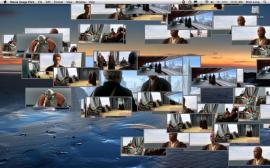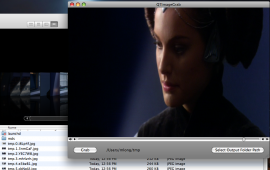Record Your Core Animation Animation
Every once in a while I find a way to combine multiple technologies that, while they don’t produce anything terribly useful, are very interesting when combined. In this post I will be taking a look at combining Core Animation and QuickTime. As you may or may not be aware, you can draw in a graphics context while your Core Animation animation is running and add each image created to a QTMovie object from QTKit. This enables you to create a QuickTime movie of your Core Animation animation. Here’s how.
(more…)
Cocoa Tutorial: Adding Plugins to a Cocoa Application
A couple of weeks ago we discussed how to build frameworks and how to bundle them with a Cocoa application. This week we are going to build on that knowledge and add Plug-ins to a Cocoa application.
Core Animation Tutorial: Rendering QuickTime Movies In A CAOpenGLLayer
I’ve been experimenting a great deal lately with OpenGL and QuickTime trying to see how the two technologies work together. It’s been a bit challenging, but fortunately Apple provides two really great resources–number one, sample code. I’ve been able to learn a lot just from the samples they provide in the development tools examples as well as online. And second, the cocoa-dev and quicktime-api lists are great. Lot’s of brilliant people there who are willing to share their knowledge. It’s very helpful, prohibition to discuss the iPhone SDK notwithstanding.
Getting two technologies to work together can be a challenge especially when the bridges between the two are not necessarily clearly laid out in documentation. As I pointed out Apple provides some excellent sample code to help you along, but there is no hand-holding approach to any of it. I actually appreciate that having come from the Windows world as it seems that there all you get sometimes is hand-holding where Microsoft doesn’t trust you, the developer to figure things out and really own what you’re doing. But I digress (wouldn’t be a CIMGF post if I didn’t dig on MS a bit).
(more…)
Cocoa Tutorial: libxml and xmlreader
Let us pretend for a moment that NSXMLDocument was not available to your Cocoa application for some reason. Perhaps you have low memory requirements, perhaps you are running on a slimmed down version of OS X. Whatever the reason, for the purposes of this exercise, NSXMLDocument does not exist.
Let us now assume that we have a requirement to parse an xml document quickly and without loading the entire tree into memory in a object structure. In a situation like this libxml comes in handy. Unfortunately it is quite a bit more complicated than calling alloc init on NSXMLDocument.
libxml is a C library that is included with all current releases of OS X. With this library we can quickly read in a document, scrape the information we need out of that document and avoid loading the entire tree into memory at once. In addition, libxml (and more specifically xmlReader) does this very quickly, far faster than NSXMLDocument which is very useful when you have a lower end CPU. In this project we are going to create a simple application that reads in an xml file containing a list of people, their names and their ages. For the purposes of demonstration we are going to load that data into an array of NSDictionary objects and display it in a standard Cocoa window.
Cocoa Tutorial: Audio Scrub
I am currently working on an application that needs to set markers in audio and video tracks. While it’s easy to find a marker visually in the video tracks, it wasn’t quite so clear as to how to set a marker in an audio track. In this tutorial, I’ll demonstrate how to create an audio scrub utility that will play a short audio clip when you drag an NSSlider. It shows the current time code of the track while you update the slider.
(more…)
Core Animation Tutorial: QTMovieLayer and Image Animation
 In my first post I wrote about using NSOperation to grab an image of the current frame of a QuickTime movie while it was playing and save it out to the filesystem. Considering the excitement that is surrounding Core Animation these days, I thought it might be interesting to take that project and change it to instead grab the current frame and animate it across the screen using a Core Animation layer (CALayer). I had to employ a few tricks to get it to work, but the end result, while completely useless, is quite excellent.
In my first post I wrote about using NSOperation to grab an image of the current frame of a QuickTime movie while it was playing and save it out to the filesystem. Considering the excitement that is surrounding Core Animation these days, I thought it might be interesting to take that project and change it to instead grab the current frame and animate it across the screen using a Core Animation layer (CALayer). I had to employ a few tricks to get it to work, but the end result, while completely useless, is quite excellent.
NSOperation Example
 Forget Mandelbrot sets (Apple coding headstarts) and Expression Trees. NSOperation is really not that hard.
Forget Mandelbrot sets (Apple coding headstarts) and Expression Trees. NSOperation is really not that hard.
In his post, Marcus introduced how to use NSOperation to greatly simplify multi-threading tasks in your application. I am now going to provide a step-by-step walk-through sample application that uses NSOperation, NSOperationQueue, and QTKit.
While looking around the Internet, I noticed that the only examples of using NSOperation available were related to scientific applications. I wanted something that I could relate to a little better and since I’ve been working with QTKit a lot lately, I figured it would be a good framework to build from. This application simply grabs images of a movie while it is playing back and saves them out to a file. It’s pretty simple, but it shows how to do something fairly practical.
(more…)
